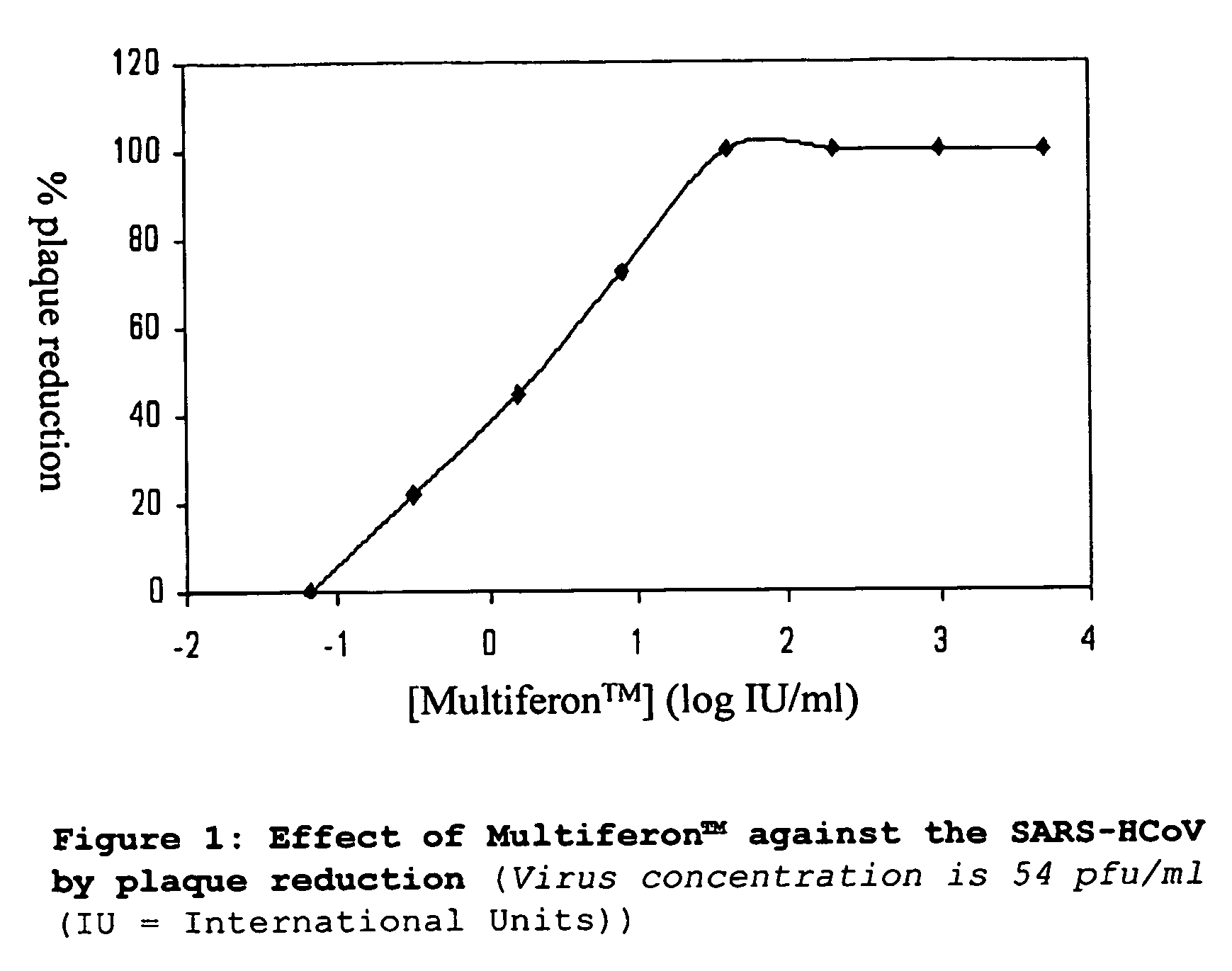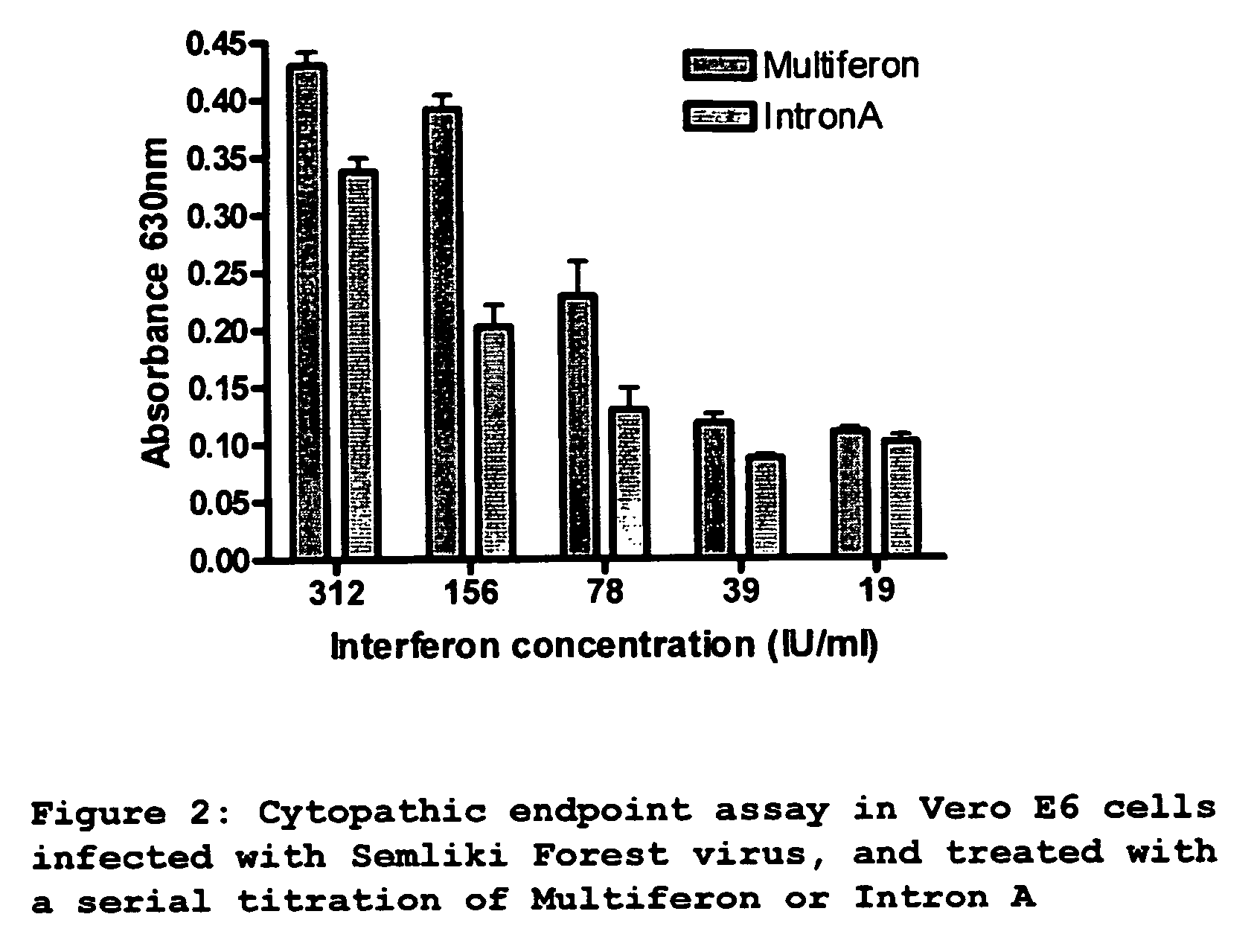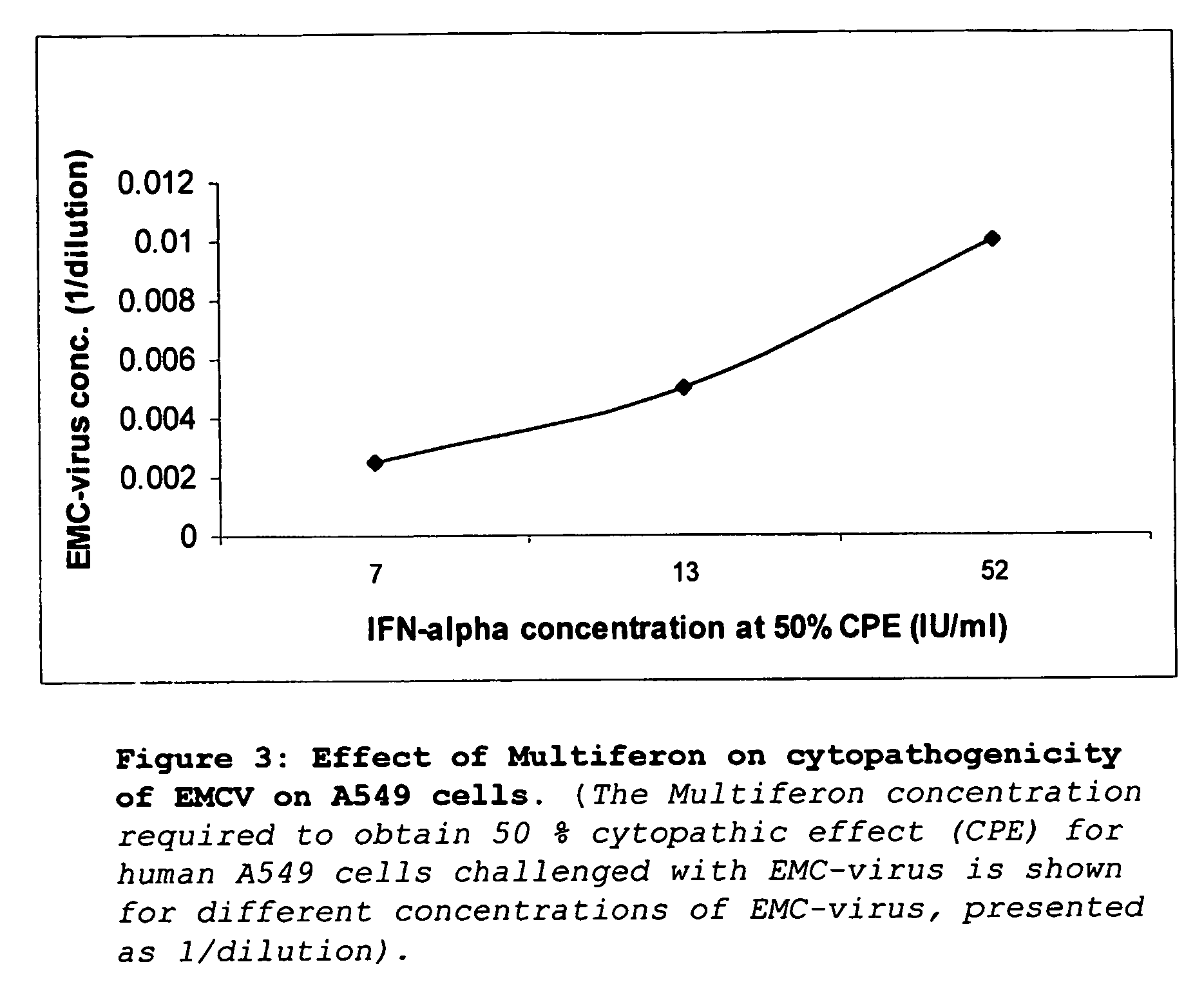Interferon for treating or preventing a coronaviral infection
a coronaviral infection and interferon technology, applied in the field of composition, can solve the problems of milder symptoms, adverse reactions, and series of negatives
- Summary
- Abstract
- Description
- Claims
- Application Information
AI Technical Summary
Benefits of technology
Problems solved by technology
Method used
Image
Examples
example 1
Anti-Viral Effect of Interferon Against SARS-HCoV Infection in Vero E6 Cells
[0084] The effectiveness of the interferons to inhibit the cytopathic effect following SARS-HCoV infection was tested in a cytopathic endpoint assay and a plaque reduction assay. All endpoint assays were carried out using the multi-subtype interferons Multiferon™ and interferon αn3, as well as single subtype recombinant interferon alpha (subtypes interferon α2a, interferon α2b, and interferon αn1) and the interferon beta (IFNβ) subtypes interferon β1a and interferon β1b as well as the anti-viral Ribavirin for comparison.
Preparation of Anti-Viral Treatments
[0085] A broad range of concentrations (obtained by ten-fold dilutions) encompassing the inhibitory dosages stated by the manufacturer for other viral-host combinations was tested. Compounds already present in aqueous injections were made up to volume using Hank's buffered saline solution. For tablet and capsule formulations with soluble active ingredie...
example 2
[0105] SARS-HCoV, strain Frankfurt-1, kindly provided by the Bernard Notch Institute, Frankfurt, Germany, was propagated on Vero E6 cells, an African Green Monkey cell line obtained from American Type Culture Collection, Manassas, Va., USA. For titration of the virus, serial dilution of SARS-HCoV were added to Vero E6 cells grown in micro-plates with Eagle's medium containing 2% foetal calf serum. After 3 days of culture, cytopathogenic effects were determined microscopically and cytotoxity was then assayed using a calorimetric assay based on the measurement of lactate dehydrogenase (LDH) activity released from the cytosol of damaged cells (Cytotoxicity detection kit, Roche Diagnostics GmbH, Penzberg, Germany).
[0106] For the antiviral experiments the following four different commercially available interferon preparations were used: 1) Intron A™, Schering Plough, USA; 2) Roferon™, Roche, Switzerland; 3) Betaferon™, Schering AG, Germany and 4) Multiferon™ (Viragen, Fla., USA).
[0107]...
example 3
Anti-Viral Effect of Multi-Subtype Interferon as Compared to Intron A Against Semliki Forest Virus in Vero E6 Cells
[0116] Vero E6 cells were seeded in 96-well plate, at a density of 10000 cells per well. After incubation overnight at 37° C., cells were incubated with 100 ul of a serial 10-fold dilution of Multiferon or Intron A (titration range from 1250 IU / ml-2.4 IU / ml). After 24 hours, cells were infected with 5000 pfu of Semliki Forest Virus (estimated MOI was 0.1) and further incubated for 48 hours until cytopathic effect was observed in untreated wells. Media was removed from cells, and cells were washed in 1× PBS, then fixed for 10 minutes at room temperature in 4% paraformaldehyde in PBS. Paraformaldehyde was removed and cells were stained with 0.2% crystal violet in 2% ethanol for 10 minutes at room temperature. Stained plates were washed and degree of colouration was quantified at 630 nm using an ELISA reader. Triplicate data is presented in graph format (FIG. 2).
Results...
PUM
| Property | Measurement | Unit |
|---|---|---|
| OD | aaaaa | aaaaa |
| pH | aaaaa | aaaaa |
| stability | aaaaa | aaaaa |
Abstract
Description
Claims
Application Information
 Login to View More
Login to View More - R&D
- Intellectual Property
- Life Sciences
- Materials
- Tech Scout
- Unparalleled Data Quality
- Higher Quality Content
- 60% Fewer Hallucinations
Browse by: Latest US Patents, China's latest patents, Technical Efficacy Thesaurus, Application Domain, Technology Topic, Popular Technical Reports.
© 2025 PatSnap. All rights reserved.Legal|Privacy policy|Modern Slavery Act Transparency Statement|Sitemap|About US| Contact US: help@patsnap.com



